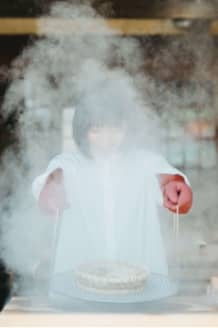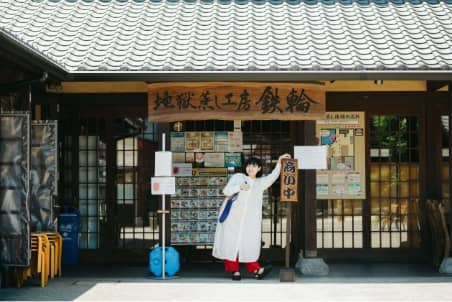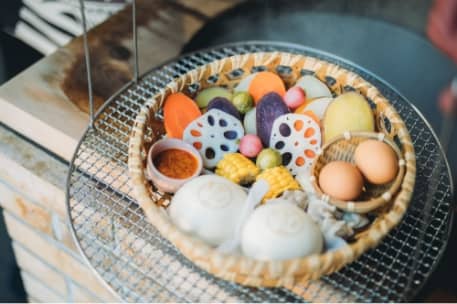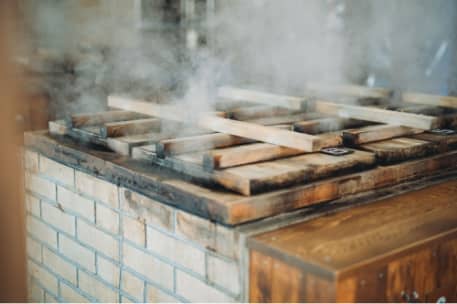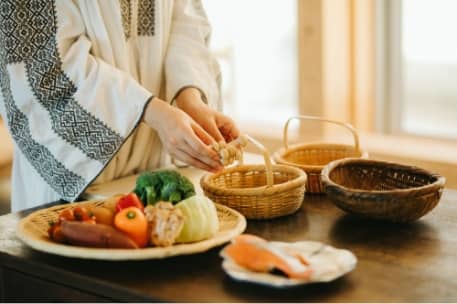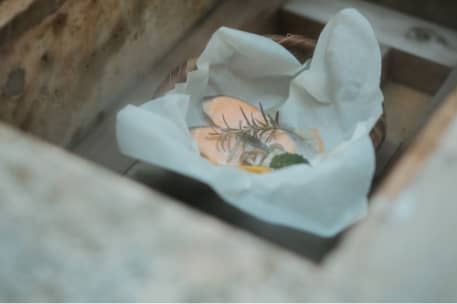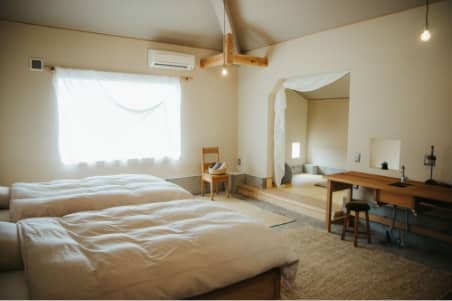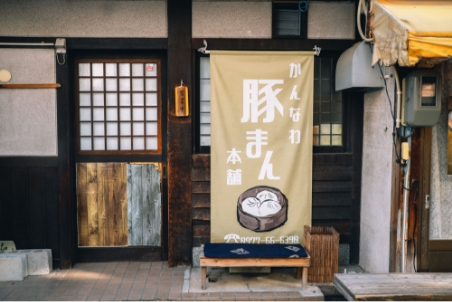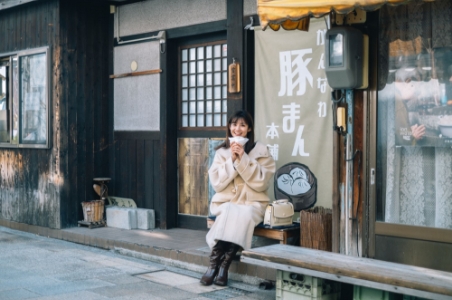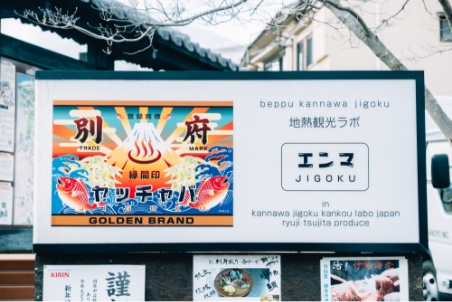
Steam rises from various alleyways Kannawa area is full of hot spring atmosphere

It is said that onsen spas opened after Ippen Shonin was cured by the raging steam more than 700 years ago in the Kamakura period. Today, it is one of the best onsen towns in Beppu, attracting people from all over Japan and around the world.
Although there are many onsen, it is not uncommon for Kannawa-no-Yu to have a completely different spring quality between springs right next to each other. People walking with towels and tubs in their hands never cease to be seen. Cats can be seen sleeping comfortably on the gutter where the onsen flows.
The onsen here in Kannawa are not just for soaking in hot water and warming up. The powerful onsen sometimes annoy people, but still provide great blessings. People have incorporated onsen into their daily lives and used them in various ways. One of the typical examples is jigokumushi (food steamed from onsen water).


Jigokumushi is the cooking method of steaming ingredients using steam from a hot spring; also refers to food cooked by that method.
Yes, you can also eat hot springs.

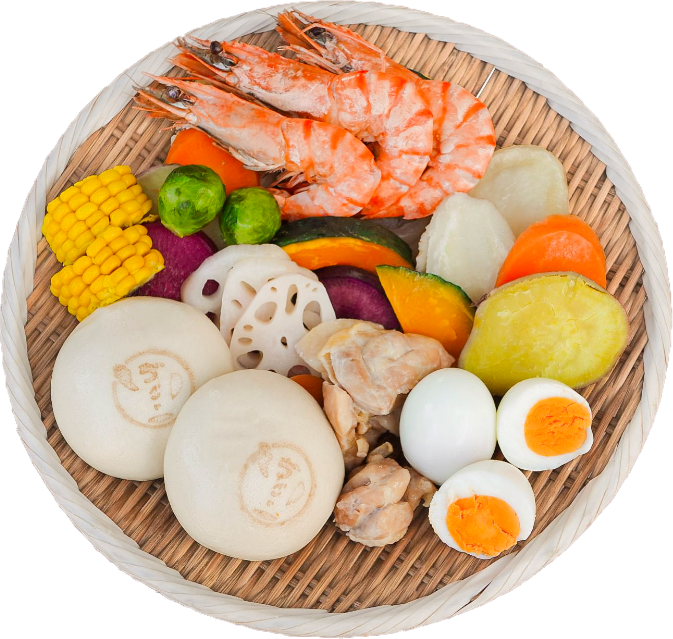
The impact and strangeness of the name and the healthiness of the jigokumushi have attracted a lot of attention, and it has become a specialty of Beppu.
It is however still not well known.

Just what is it?
I went to Kannawa in Beppu to find out.
The method of jigokumushi is very simple. The ingredients are put in a kettle covered with a lid and steamed.
After that, you take out the ingredients just at the right time and eat them. Even so, the taste is condensed so you can enjoy a different taste from the usual steamed dishes.
Please take advantage of the energy and nutrition of the hot spring for food or anything you like.
You can use the steam to cook seafood such as shrimp, crabs, scallops, sea bream and horse mackerel. You can also cook meat such as pork, chicken and beef, as well as simple potatoes and eggs. There are no rules -- you can steam cabbage and together or potatoes and chicken -- anything goes.
After steaming, you can eat it as it is, or eat it with salt or soy sauce, or enjoy it with your favorite flavoring such as ponzu or sauce. There are no rules -- anything cooked this way is considered jigokumushi.
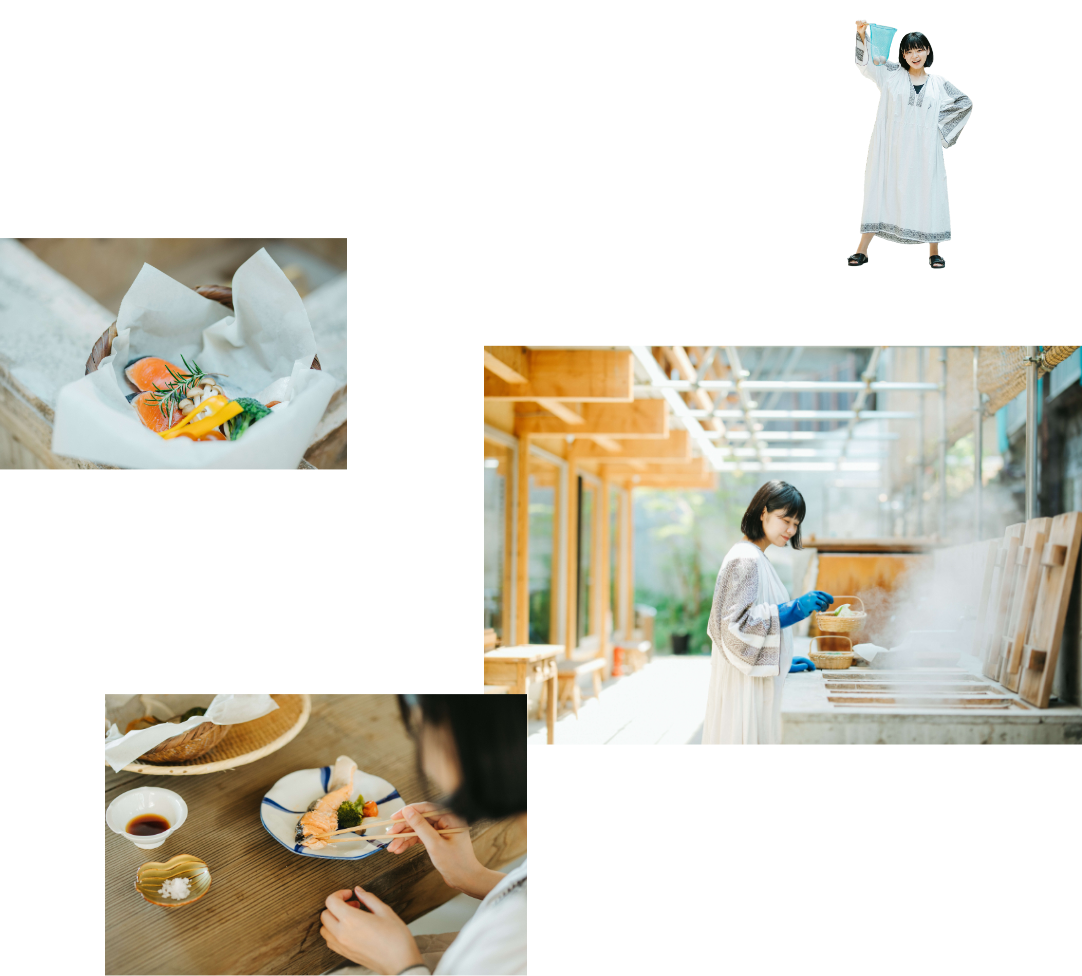
A unique experience where you can cook
your favorite ingredients using hot springs
steam
Since ancient times, Japanese inns have used the name "jigokumushi" for steamed sea bream and chawanmushi (a savory steamed egg custard with assorted ingredients) served as a hospitality treat.
In addition, there are many inns called tojishuku (hot springs inn) in Kannawa.
"Toji" means staying in a hot spring area for a long time and healing your health problems with the benefits of the hot spring. A hot springs inn is a place for long-term guests to stay and go to the nearby hot springs.
Since most guests don’t require meals, the usual style is for guests to procure meals themselves.
In such a hot spring Inn, there are many inns equipped with kama (kettles) that can be used to make jigokumushi.


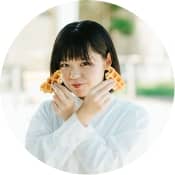
There are many facilities
around Kannawa where you can casually
experience jigokumushi.
There are facilities where you can buy and
cook ingredients yourself and facilities where
you can purchase ingredients on the spot
and try jigokumushi cooking,
so you can choose the way
that suits you.


JIGOKUMUSHIKOUBOU
KANNAWA
Jigokumushi Koubou Kannawa is a popular spot where people line up on holidays to get orthodox jigokumushi food such as fish, meat, vegetables eggs, as well as delicacies such as pizza, Chinese pork dumplings or sweets.
It is also fun to add and remove ingredients while steaming and to try various seasonings and so on.





NISAINOYUYADO
ASAHIYA
Nisainoyuyado Asahiya is a stylish Inn renovated that was originally and old style inn where you can enjoy jigokumushi. With large Windows and a sense of openness, the interior is spacious and breezy, making it a relaxing space.
Not only can you enjoy jigokumushi cuisine, you can also experience cooking it yourself in the kettle set up in the room.





KANNAWA
BUTAMAN HONPO
Kannawa Butaman Honpo" is a jigokumushi steamed pork butaman specialty shop run by local housewives who love steamed in jigoku kettles.
The signature menu, "Jigokumushi Butaman," is a local specialty consisting of fluffy buns filed with pork and vegetables steamed with hot gas gushing from the onsen. When you take a bite, the faint scent of the onsen comes through your nose, and the juicy flavor of meat and the sweetness of the large-cut vegetables spreads throughout your mouth.



Geothermal Tourism Lab
ENMA
Emotional activities
Geothermal Tourism Lab ENMA is a geothermal tourism lab where you can experience geothermal energy that takes maximum advantage of the heat produced by Kannawa Onsen. The facility offers fun with jigokumushi; it has a table where you can enjoy jigokumushi cuisine or try your hand at onsen dyeing while soaking in the foot bath.

Morihan Bettei
Located in a place where you can see a panoramic view of Beppu Bay, Morihan Bettei offers “beauty, food, and leisure" with the power of onsen.
The faciliy includes an "onsen teahouse" where you can try Beppu's specialty, jokumushi cuisine, using fresh seafood. The jigoku steamed abalone and turban shellfish taken out of the fish tank have an exquisite flavor.
Other popular menus are the semi-open-air foot bath cafe and the blue sky BBQ that you can visit empty-handed.

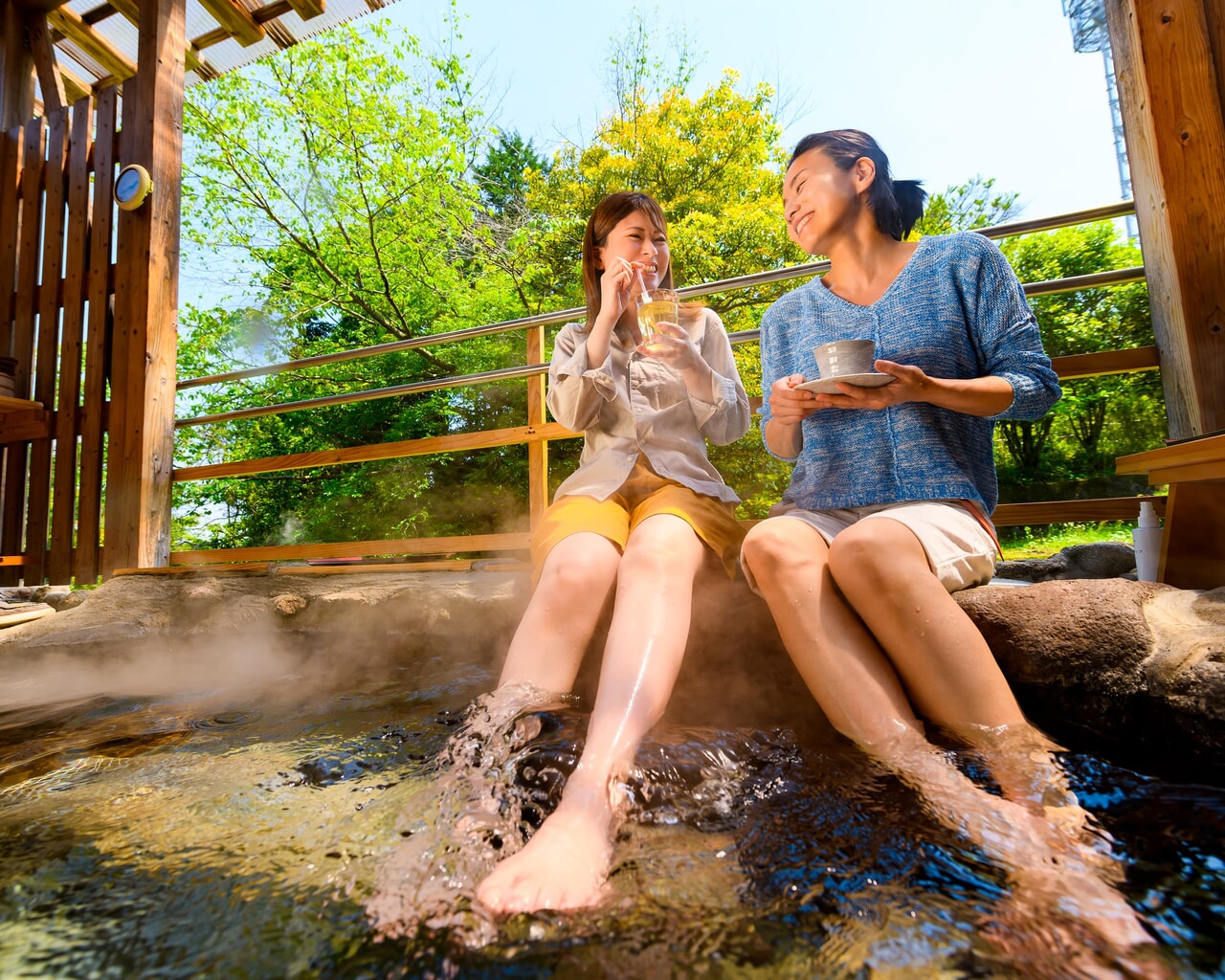
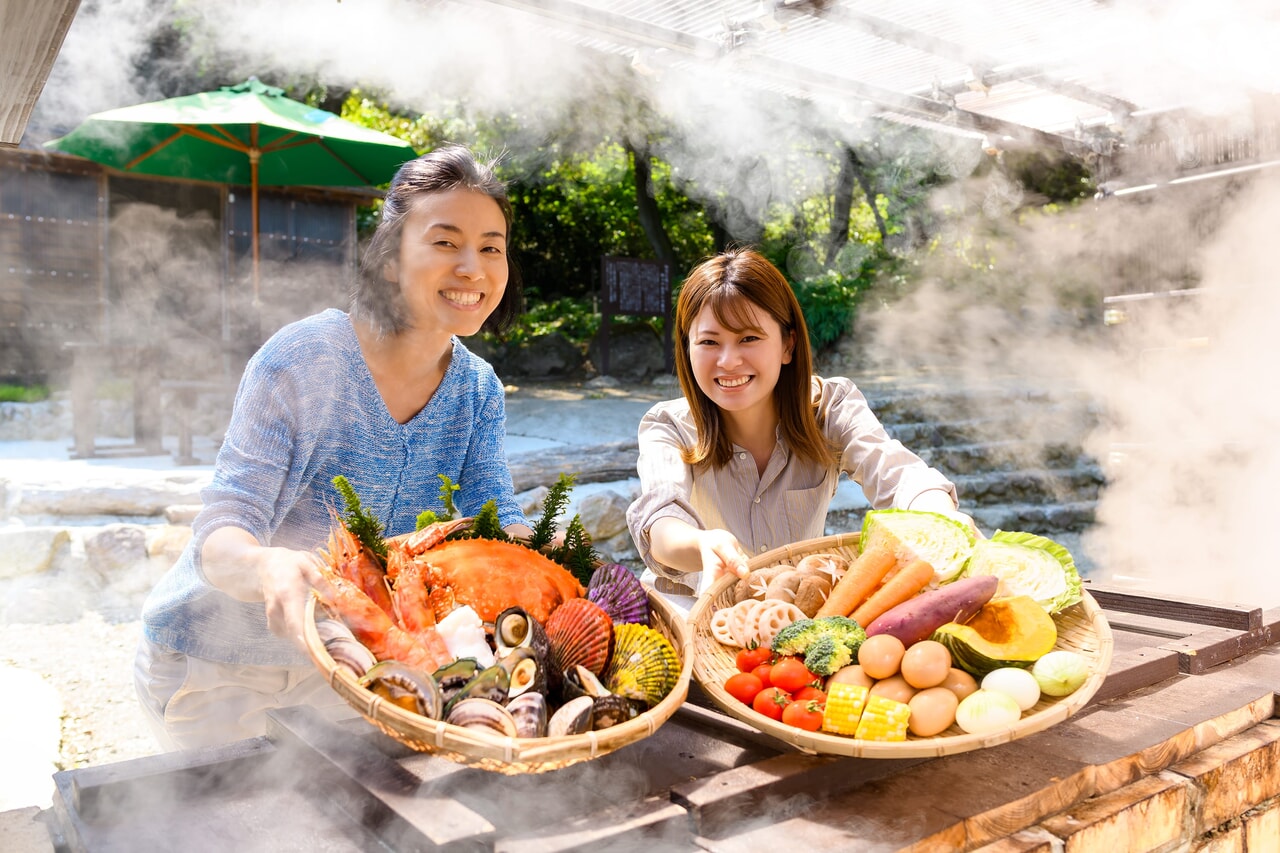
Nowadays, jigokumushi can be enjoyed in
many ways; how did the people living in
Kannawa incorporate it into their lives?

The wisdom of our ancestors to utilize the energy of hot springs in their daily lives.
In my father’s time, he dug a hole in the ground and buried it, and I sprinkled potatoes.

Honda
The person who told me that was Hidetoshi Honda, the owner of Momotaro, a restaurant in Kannawa.
They used to call it "Kannawa Jigoku" in Kannawa. Mr. Honda remembers the scene from his childhood, such as when steam would gush out when you dug into a cliff, and dragonflies would look like fossils. It is a place where the whole area is heated and we always walked together with the hot springs. Sometimes too much steam would be gushing out and it would be impossible to touch it. When that happened, he would say "it's mad again."
"When I was little, I used to put cold rice in a colander, cover it with a cloth, and heat it up with steam. It had a peculiar smell and I didn't like it very much. But recently I ate jigokumushi rice and it was good. We also had an ondoru (Korean stove under the floor) which used steam like a kotatsu leg warmer. We also made higashiyama (dried sweet potatoes) under the floor of the ondoru. I also used it as an iron to dry some tenugui (dyed cotton cloth) called bungo shibori, which we sold as a souvenir. My mother would hold one end of the cloth and I would hold the other, so I was able to help." Mr. Honda looks back fondly on his childhood memories.
He said, “maintaining hot springs is not easy because it is time-consuming and expensive, but we have to keep them from falling into disrepair."
It seems that the wisdom of incorporating the energy of hot springs into daily life, not only for bathing but also for cooking, and for warming up and ironing as well, has taken root.

The jigokumushi is thought of as healthy and good for the body and beauty, but is that really so?
To learn more about jigokumushi, I visited Shinichiro Maeda of "Mushicharou."
Onsen manju (bun with a bean‐jam filling) which is steamed with steam from onsen, are seen at onsen resorts all over Japan. However, I think jigokumushi is unique to Beppu.
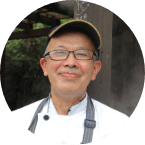
Maeda
Mr. Maeda has been studying low-temperature steam for fifteen years. We devised original equipment such as steaming kettle, lid and attachment to get the best steaming method. There are three steaming kettles: Ichiro, Jiro, and Saburo, each of which has a different role.
Mr. Maeda is originally from Saga Prefecture and has lived in Tokyo. He began studying low-temperature steam after being exposed to Chinese cuisine called “Chi-Ko.” They say he became engrossed with the steam of Kannawa and set up a shop there.
"Even if it is the same jigokumushi, the condition changes depending on various factors such as the quality of the spring, the amount of hot gas, air pressure, humidity, and time of day. For example, many onsen in Kannawa have hot gas that is over 100 degrees. The hot gas here is mildly acidic and close to that of human body fluids. The steam of Kannawa is miraculous. It has all the things that are good for your health. I used to adjust the temperature for daikon radish to somewhere between 55 and 95 degrees in 10-degree increments. When you do this, you get a different taste and texture for each temperature. That's how sensitive the ingredients are to different the conditions."
Mr. Maeda says that people are what they eat, and cooking by steaming does not oxidize people and prevents aging. "When you eat jigokumushi, you feel full and satisfied. But you digest it quickly and soon feel hungry again. I think your body has a sense of “being in tone” from the inside,” he says speaking of how great jigokumushi is.
Enjoy Beppu onsen with
your five senses
The people of Kannawa have developed a unique culture and lifestyle by living together with the enormous energy of hot springs. Hot springs are indispensable in all aspects of food, clothing, and shelter.
Jigokumushi, which can transfer the energy from food into the body, may have power that we do not yet understand.
When you come to Beppu, be sure to soak in the hot springs, cook in the hot springs, eat from the hot springs, and enjoy the energy of the hot springs with your five senses.








